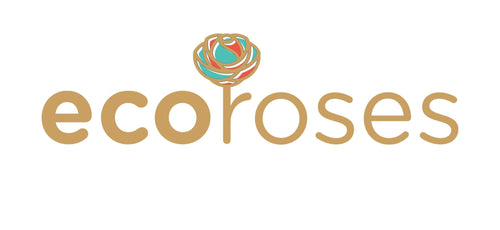Flowers have always been more than just natural wonders-they are powerful cultural symbols, artistic muses, and timeless design inspirations. From the Renaissance to the 21st century, fashion has continuously borrowed the beauty, elegance, and symbolism of flowers to create iconic styles. Every decade has seen floral patterns, shapes, and motifs reimagined on fabrics, accessories, and runways. Today, floral fashion is as relevant as ever, blending tradition with modern interpretations.
Whether you’re a fashion enthusiast, a history lover, or simply someone who adores the symbolism of blooms, this exploration of floral-inspired fashion through decades will uncover just how deeply rooted flowers are in the evolution of style. For those looking to bring floral inspiration into everyday life, you can explore stunning arrangements like these flowers and bouquets that reflect the same timeless beauty seen in fashion.
🌸 The Early Roots of Floral Fashion
Renaissance & Baroque Eras (1500s–1600s)
The love affair between flowers and fashion began centuries ago. During the Renaissance, artisans wove detailed floral motifs into tapestries and garments. Royals and nobility wore gowns embroidered with roses, lilies, and vines as symbols of wealth and virtue. These garments were more than just decorative-they reflected social standing and cultural values.
In the Baroque period, extravagance reigned. Designers embraced bold floral brocades in silks and velvets. Flower patterns weren’t just prints; they were meticulously hand-sewn, creating depth and richness.
🌹 The 18th Century: Rococo Elegance
The Rococo period introduced softer, more playful floral influences. Pastel colors became fashionable, often paired with delicate flower embroideries. Marie Antoinette herself was known for her love of flower-themed gowns, particularly adorned with roses.
Accessories also bloomed during this era—fans, hats, and shoes were often decorated with silk flowers, making fashion more romantic and whimsical.
🌼 The Victorian Era: Flowers as Symbols
During the Victorian age, floriography—the “language of flowers”—exploded in popularity. Each bloom carried a hidden meaning, and clothing reflected this coded form of communication. Dresses often featured embroidered violets for modesty, roses for love, or lilies for purity.
Victorian floral prints were intricate, often resembling gardens on fabric. Women wore dresses made of heavy materials, but florals softened the silhouettes, balancing practicality with elegance.
🌺 The 1920s: Art Deco & Bold Blooms
With the rise of Art Deco, the 1920s introduced geometric takes on flowers. Instead of soft romantic prints, designers used stylized motifs inspired by exotic blooms like orchids and lotus flowers. These patterns often appeared on flapper dresses, scarves, and even jewelry.
Flowers symbolized rebellion during this era-the freedom of embracing bold designs reflected women’s growing independence and social liberation.
🌻 The 1960s & 70s: The Flower Power Movement
No era cemented the connection between flowers and fashion quite like the 1960s and 70s. The counterculture and hippie movements adopted flowers as symbols of peace, love, and resistance to war.
-
Floral headbands became iconic, representing natural beauty and simplicity.
-
Flowy dresses with large prints echoed the free-spirited lifestyle of the time.
-
Bright, psychedelic patterns transformed everyday clothing into walking gardens.
Flower power wasn’t just a trend-it was a political statement. Wearing flowers signified a rejection of mainstream culture and a commitment to peace and harmony.
🌷 The 1980s & 90s: Reinvention of Florals
In the bold, extravagant 1980s, florals took on new forms. Designers like Christian Lacroix embraced oversized, dramatic floral prints, often mixed with metallics and neon colors. Shoulder pads paired with blooming patterns created powerful silhouettes.
By the 1990s, minimalism toned florals down. Smaller, dainty prints, often on slip dresses or skirts, became popular. The “grunge floral” look combined delicate roses with leather jackets, making flowers both rebellious and romantic.
🌹 2000s–2010s: Modern Florals on the Runway
The new millennium redefined flowers in fashion:
-
Haute Couture: Designers like Alexander McQueen and Dior created runway shows featuring real flowers sewn onto gowns, transforming models into living bouquets.
-
Streetwear: Florals became versatile, appearing on casual wear like sneakers, hoodies, and jeans.
-
Bridal Fashion: Wedding gowns began to embrace three-dimensional floral appliques, adding texture and depth to classic white dresses.
Celebrities like Beyoncé and Rihanna frequently wore floral-inspired outfits, further cementing flowers as a symbol of empowerment and creativity.
🌼 Today: Sustainable & Artistic Florals
In the 2020s, fashion is experiencing a shift toward sustainability-and flowers remain central to that movement. Designers are experimenting with eco-friendly fabrics dyed with natural flower pigments. Floral embroidery and motifs are now seen as timeless investments rather than fast fashion trends.
Floral fashion today often combines modern minimalism with traditional beauty. For example:
-
Neutral tones paired with soft flower accents.
-
Floral statement accessories like oversized earrings or handbags.
-
Collaboration between florists and fashion houses for campaign shoots.
🌸 Beyond Clothing: Flowers in Accessories & Beauty
Floral inspiration doesn’t stop at garments-it extends to all corners of style.
-
Perfumes: The fragrance industry relies heavily on flowers, with roses, jasmine, and lavender as timeless bases.
-
Jewelry: Designers craft pieces shaped like petals or embed actual dried flowers in resin.
-
Hairstyles: From flower crowns to single blossoms tucked behind the ear, flowers remain iconic in beauty trends.
🌺 Why Flowers Will Never Leave Fashion
Flowers are timeless because they represent life, renewal, and individuality. Each bloom carries meaning, making them endlessly adaptable to fashion’s changing landscape. Whether embroidered onto gowns, printed on t-shirts, or celebrated in jewelry, flowers continue to symbolize both tradition and innovation.
If you’re inspired by the beauty of flowers in fashion, you can bring that same aesthetic into your life with fresh arrangements. Explore elegant flowers and bouquets to experience how timeless floral beauty transforms not only style but also everyday spaces.
🌹 Conclusion
From Renaissance embroidery to modern sustainable fashion, flowers have been woven into every fabric of human expression. Each decade reinvents the way flowers are celebrated in style, yet the symbolism remains timeless.
Fashion may change, but florals will always bloom-whether in royal courts, on runways, or in your wardrobe.


